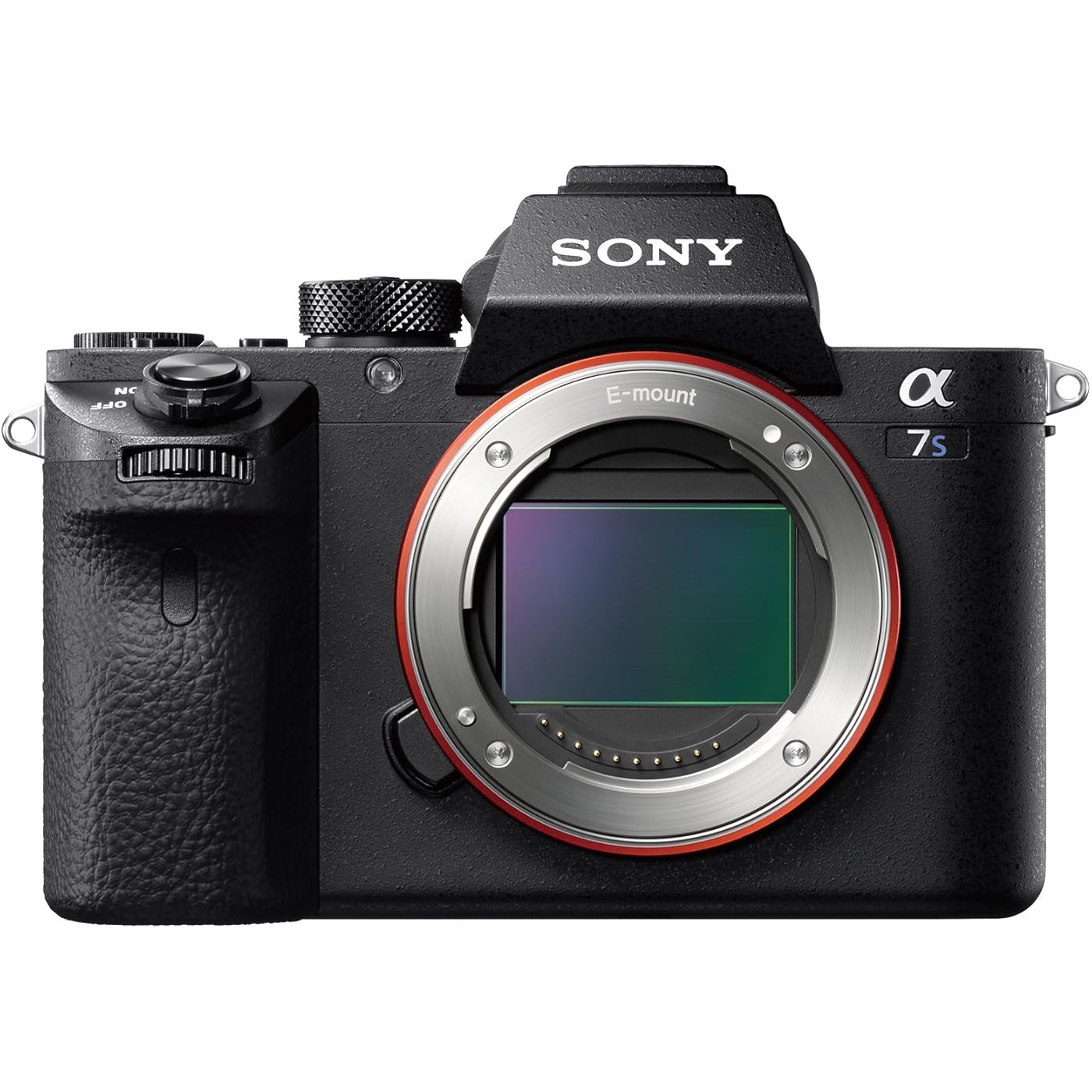

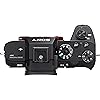
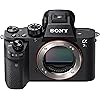
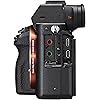


Buy Now, Pay Later
- – Up to 36-month term if approved
- – No impact on credit
- – Instant approval decision
- – Secure and straightforward checkout
Ready to go? Add this product to your cart and select a plan during checkout.
Payment plans are offered through our trusted finance partners Klarna, Affirm, Afterpay, Apple Pay, and PayTomorrow. No-credit-needed leasing options through Acima may also be available at checkout.
Learn more about financing & leasing here.
Selected Option
FREE refund/replacement until Jan 31, 2026
To qualify for a full refund, items must be returned in their original, unused condition. If an item is returned in a used, damaged, or materially different state, you may be granted a partial refund.
To initiate a return, please visit our Returns Center.
View our full returns policy here.
Recently Viewed
Style: Base
Features
- full-frame camera with 5-axis image stabilization
- fast and effective, enhanced fast hybrid af
- 12.2 megapixels 10 35mm full-frame exmor cmos sensor lens compatibility - sony e-mount lenses
- bionz x image processing engine ; clear image zoom :still/movie: approx. 2x
- in the box: rechargeable battery np-fw50; cable protector; ac adaptor ac-uud11; battery charger bc-vw1; shoulder strap; body cap; accessory shoe cap; eyepiece cup; micro usb cable
- Mounting type: Bayonet
Description
The α7S II has evolved in both Stills and Movies adding internal 4K video recording, 5-axis image stabilization and High-speed AF with enhanced accuracy - while maintaining its legendary low-light/ low noise capability for extraordinary high sensitivity of up to ISO 409,6002. Additional updates include; S-Gamut. Cine/S-Log Picture Profiles and 120P Full HD 1920x1080 high- frame rate video for 5x slow motion. An evolution of a low-light legend is here!
Compatible Mountings: Sony Mirrorless
Aspect Ratio: 169, 11, 32, 43
Photo Sensor Technology: CMOS
Supported File Format: JPEG, Raw
Image Stabilization: Optical
Maximum Focal Length: 35 Millimeters
Optical Zoom: 1 x
Maximum Aperture: 3.5 Millimeters
Expanded ISO Minimum: 80
Metering Description: Center-Weighted Average, Multiple, Spot
Brand: Sony
Model Name: Sony a7S II
Age Range Description: Adult
Built-In Media: AC Adapter AC-UUD1, Accessory shoe cap, Battery Charger BC-VW1, Body cap, Cable Protector, Camera, Eyepiece cup, Micro USB cable, Rechargeable Battery NP-FW50, Shoulder strap
Are Batteries Included: Yes
Model Number: ILCE-7SM2/BQ
Remote Included: No
Model Series: Alpha 7
Series Number: 7
Global Trade Identification Number: 73
UPC: 027242894273
Manufacturer: Sony
Warranty Description: 1 year coverage for labor, 1 year coverage for parts
Metering Methods: Center-Weighted Average, Multiple, Spot
Exposure Control: Aperture Priority, Auto, Manual, Program, Shutter Priority
White Balance Settings: Auto, Cloudy, Custom, Daylight, Flash torch, Fluorescent, Incandescent, Shade, Underwater
Self Timer: 10 Seconds, 2 Seconds, 5 Seconds
Crop Mode: APS-C
Screen Size: 3 Inches
Display Type: LCD
Display Fixture Type: Articulating
Display Resolution Maximum: 1,228,800 dots resolution
Has Color Screen: Yes
Flash Memory Type: SDXC
Write Speed: up to 90-95 MB/s
Flash Memory Speed Class: UHS Speed Class 3 (U3)
Flash Memory Bus Interface Type: UHS-I
Auto Focus Technology: Contrast Detection
Focus Features: Hybrid
Autofocus Points: 25
Focus Type: automatic_only
Focus Mode: Continuous-Servo AF (AF-C), Direct Manual Focus (DMF), Manual Focus (MF), Single-Servo AF (AF-S)
Autofocus: Yes
Aspect Ratio: 169, 11, 32, 43
File Format: JPEG, Raw
Effective Still Resolution: 12.2 MP
JPEG Quality Level: Basic, Fine, Normal
Supported Image Format: JPEG, RAW
Maximum Image Size: 3840 Pixels
Bit Depth: 14 Bit
Total Still Resolution: 12.2 MP
Maximum Focal Length: 35 Millimeters
Optical Zoom: 1 x
Lens Type: Fisheye
Zoom: optical
Camera Lens: Fisheye Lens
Minimum Focal Length: 35 Millimeters
Real Angle Of View: 63.4 Degrees
Digital Zoom: 4 x
Lens Construction: 9 elements in 8 groups (or similar)
Connectivity Technology: HDMI, NFC, USB
Hardware Interface: AV Port
Wireless Technology: nfcWi-Fi
HDMI Type: Type D Micro HDMI
Video Output: HDMI
Total USB 2.0 Ports: 1
Total USB 3.0 Ports: 1
Total USB Ports: 1
Shooting Modes: Portrait, sports action, macro, landscape and more
Digital Scene Transition: zoom
Digital-Still: Yes
Movie Mode: Yes
Image Capture Type: Stills
Night vision: No
Compatible Mountings: Sony Mirrorless
Sensor Type: CMOS
Image stabilization: Optical
Maximum Aperture: 3.5 Millimeters
Supported Media Type: ProductImage, EnhancedContent
Expanded ISO Minimum: 80
Photo Sensor Resolution: 12.2 MP
Photo Sensor Size: Full Frame (35mm)
Maximum Shutter Speed: 1/250 Seconds
Minimum Shutter Speed: 1/8000 Seconds
Form Factor: Mirrorless
Special Feature: Brightness Control
Color: Black
Item Weight: 1 Pounds
Light Sensitivity: ISO 50-409600
Video Resolution: FHD 1080p
Viewfinder: Electronic
ISO Range: 102400 ISO
Flash Modes: Auto, Fill Flash, Hi-Speed Sync, Off, Rear Sync, Red-Eye Reduction, Slow Sync, Wireless
Camera Flash: Hotshoe
Skill Level: Professional
Has Self-Timer: Yes
Compatible Devices: Sony Mirrorless
Continuous Shooting: 5
Frequently asked questions
To initiate a return, please visit our Returns Center.
View our full returns policy here.
- Klarna Financing
- Affirm Pay in 4
- Affirm Financing
- Afterpay Financing
- PayTomorrow Financing
- Financing through Apple Pay
Learn more about financing & leasing here.
Similar Products
Top Amazon Reviews


















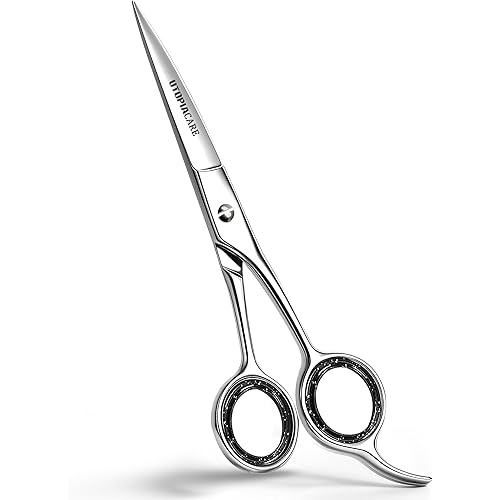
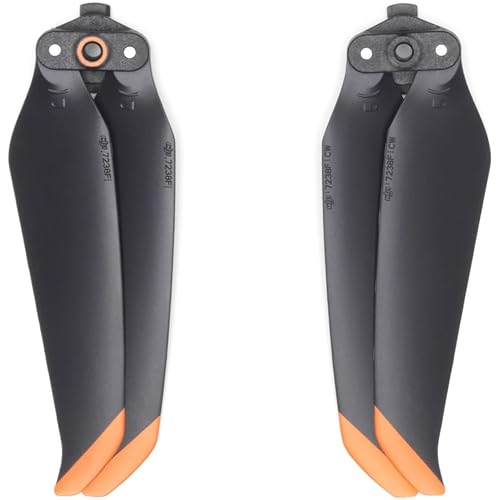











![Canon PowerShot Digital Camera [G7 X Mark II] with Wi-Fi & NFC, LCD Screen, and 1-inch Sensor - Black, 100-1066C001](https://m.media-amazon.com/images/I/81ap5aHOZdL._AC_US500_.jpg)





